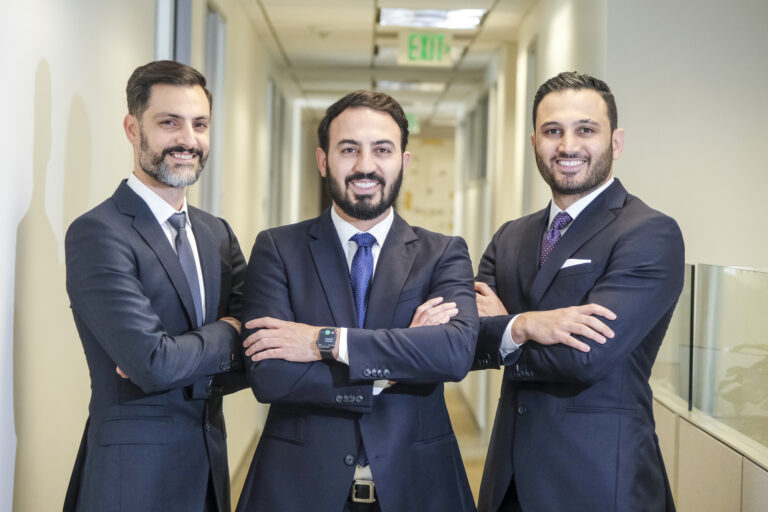
Artificial intelligence software has been integrating itself into a wide variety of professions, and the legal industry is no exception.
While we probably won’t have AI attorneys arguing cases or handling transactions anytime soon, some firms have begun using the tireless nature of the programs to take on research-intensive tasks.
And others have identified more specific uses, such as preemptively tracking down potential information useful in, say, auto collision or injury cases.
“This is one added tool that we’re going to have when somebody calls us and says they were in an accident,” said Matthew Kinsella, director of operations at Beverly Hills-based Omega Law Group P.C. “We’re anticipating this is going to save a lot of time and money in terms of liability investigations and cases.”
As these AI programs are integrated, lawyers are finding ways to use the tools to streamline their workloads. However, they should remain cognizant that, as with any other high-tech tool, they shouldn’t become too reliant on it and verify the results its work ahead of time, according to Brian Hom, a member of Clark Hill LLP’s downtown office.
“You still need lawyers to analyze the results and to verify and make sure it’s accurate, but it’s really helpful to speed up that process,” he said. “I think you just have to be aware that technology, like anything else, is a tool. It doesn’t replace the judgment of an attorney or legal staff.”
‘A game-changer’
Omega Law, a personal injury firm, announced its partnership with RoadProof, a platform offered by Iowa-based KMW Labs LLC, in May.
RoadProof is linked to virtually every publicly operated traffic camera in California, Kinsella said, and uses an AI program to monitor those cameras and detect whenever there is a vehicular collision. Once it detects the collision, it records the incident and saves the file onto a private server, where the firm can access it.
“In different counties and cities, they have relationships with whoever has those traffic cams to gain access to them,” Kinsella said. “Once we heard what they were doing, because we’re very tech-forward, we wanted to meet with them. The partnership took off almost immediately.”
The recording detail is important because most public entities and agencies do not have the infrastructure or funding to store such recorded data. This type of visual evidence can help move collision liability cases efficiently along.
“Obviously, we help people who are in are accidents, and a big part of that is proving liability. A lot of cases, when it’s not clear, we have to send an investigator out. They have to look for video footage. The issue is, most of the traffic cameras are not recording,” explained Robin Saghian, a founding partner of Omega Law. “It’s great for the clients, the cases, and what it does is it clears up liability in a lot of these cases.”
With RoadProof access, attorneys can search for a potential collision recording by date, time and location. The platform can also help in hit-and-run incidents by proving what happened.
Saghian called the technology a “game-changer” because of how quickly it can clear up any unknowns or disputes in such cases. He estimated this could benefit as many as 10% of his firm’s clients, and stressed that the program would only improve as governing entities add more and higher-quality traffic cameras to their systems.
“Unfortunately, when you get a ‘he said-she said’ accident, the insurance company sides with the insured unless there’s video evidence,” Saghian said. “Those cases can really drag out. They suck up the court’s time. They cost everybody a lot of money.”
Not an ‘end-all, be-all’
Hom, who typically represents automakers and their retailers in warranty claims and related cases, likes to use AI to compile information.
When one case has a large number of claims attached to it, AI programs are useful for isolating patterns of information among them. They can also be helpful in identifying consistencies between a current case and previous ones that have been resolved.
“It helps us try to find patterns within the cases and analyze the cases and ultimately assist the resolution of the cases,” Hom said. “It’s able to identify similarities between the case, to identify patterns, to identify any metrics that we can pull to try to reach an assessment and value of the case using historical info. AI really helps us do that.”
Some programs, such as CoCounsel, also help with drafting the rote portions of filings and motions, as well as finding appropriate case citations. But while these programs can make a firm’s workflow easier, it’s still vital that the attorneys using them check to make sure they’re producing good work.
“It’s still in its nascent form, and one thing we have to do is verify the information,” Hom said. “It could pull up the wrong case or misinterpret a case, so we need to make sure it’s still valid. We still need to do our own research and don’t rely on tech entirely. It gives us a good jump-off point, but I don’t think it’s the end-all, be-all.”
